You probably hardly think about throwing a tray of frozen chicken into the oven or never cleaning the oven knobs—but we’re here to tell you why you should be paying way more attention to what you do to your oven than you think.
10 Things You Should Never Do to Your Oven
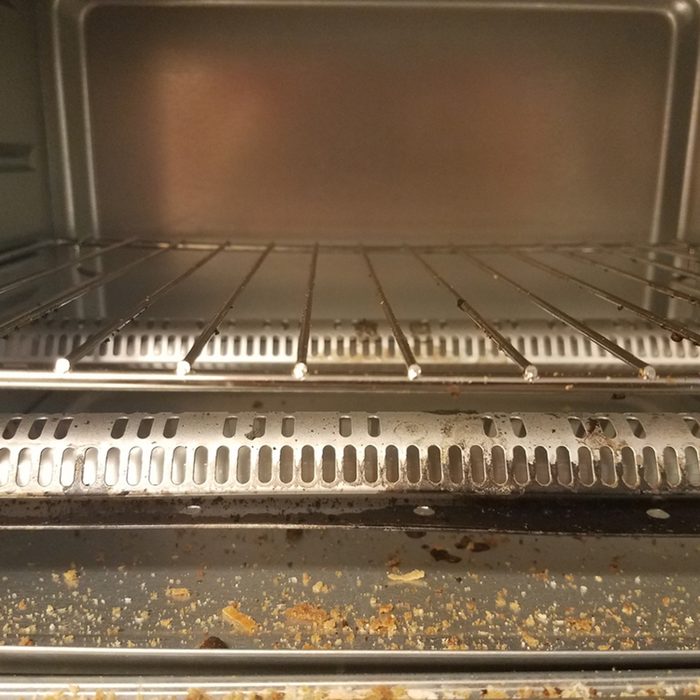
Leave a mess for days (or months)
Your daily kitchen cleanup is probably more focused on the dishes than on the oven itself, but a few touchups will go a long way. Not only are months of buildup harder to clean, but they can lead to smoke, says John Cohen, vice president of Molly Maid. Not cleaning spills after each oven use can quickly add up and can smoke during preheating the next time around,” he says. “If you use a drip tray, don’t forget to remove it and dispose of the grease and drippings after each use.” Make sure you know about these other cooking mistakes that ruin your food.
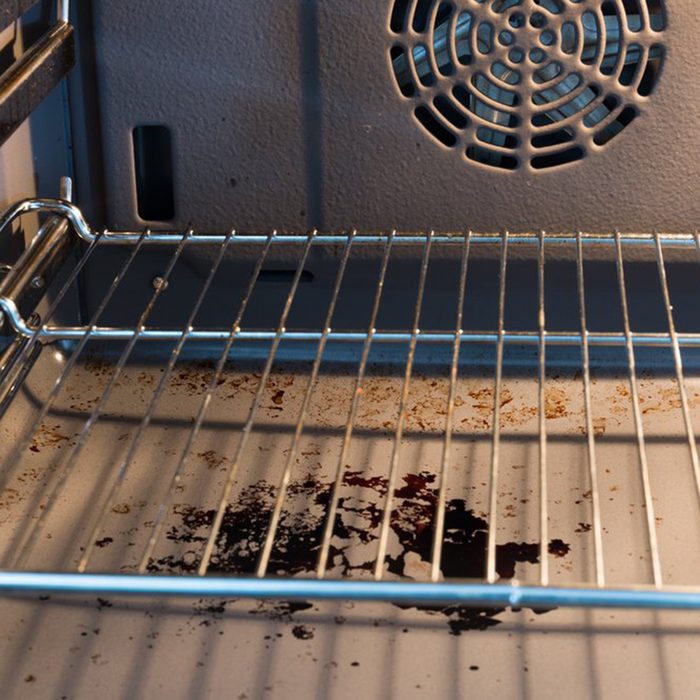
Let food mess get to the oven floor
To make those everyday spills even easier to wipe up, Cohen recommends catching crumbs and splatters before they hit the bottom of your oven. He recommends putting a drip tray or empty cookie sheet on the bottom to make it easier to scrub, or just adding a disposable oven liner.
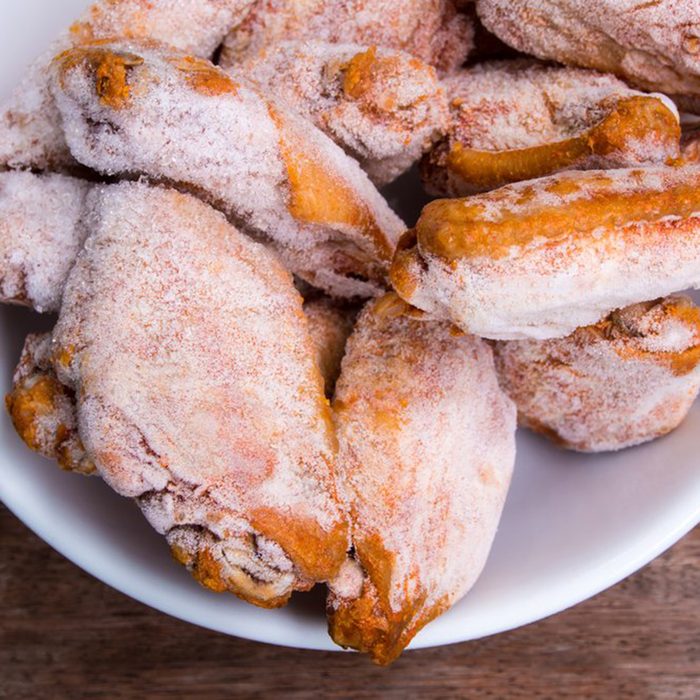
Put in frozen food that should be thawed
You might think it saves time to let frozen chicken breasts heat up in the oven before they’re totally thawed, but unless you adjust the cook time, you might leave your family at risk of food poisoning. “If you put food that is frozen or partially frozen in the oven, the timing will be off because it will need to defrost before it cooks,” says Frank Proto, chef and instructor at the Institute of Culinary Education. Play it safe by letting food fully thaw before cooking it.
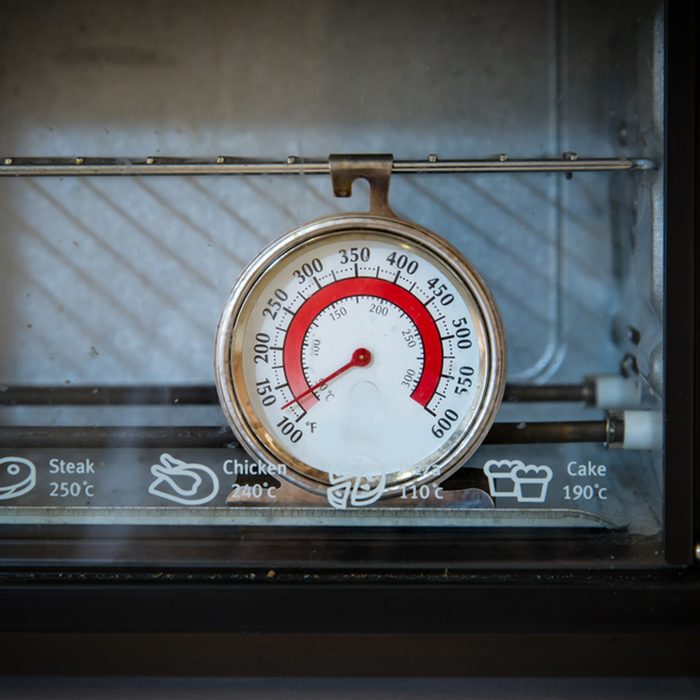
Assume the temperature is accurate
Your oven measures the temperature at one spot—which is purposely out of the way, where your food would never go. Because your oven is hotter in some spots than others, your food might not be cooking at the temperature you’d thought. In fact, Cook’s Illustrated found that oven thermometers can be off by as much as 50°F. Luckily, there’s an easy fix that can cost less than $10. “An oven thermometer will help you ensure your oven is properly heated and cooking your food at the temperature you need it to be set at,” says chef Veronica Dailey, founder of daileyfoods.com. “It’s the best kitchen investment you’ll ever make.”
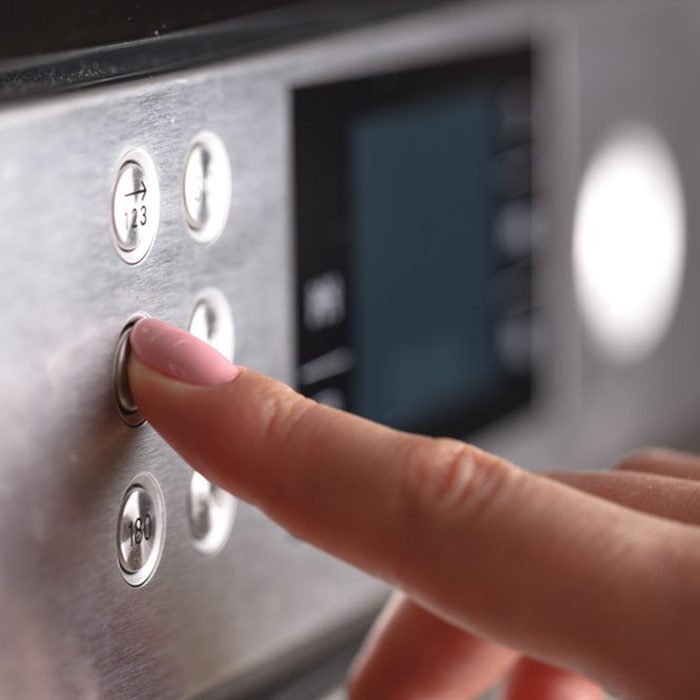
Use the convection setting on the wrong foods
In addition to the standard bake setting, which heats the oven from one spot, some models have a convection setting that uses a fan to spread the heat evenly. It doesn’t sound like much difference, but that circulated air makes food cook much faster, so your dish could get overcooked if you’re following a recipe. Unless a recipe says otherwise, stick with the bake setting. Of course, there’s a time and place for everything, says Vera Stewart, author of The VeryVera Cookbook: Recipes from My Table. “If you’re making a layer cake and baking multiples at a time, the air circulation and elimination of direct heat are necessary, so you want to opt for convection baking,” she says. “This will help achieve even browning and baking across all of your layers.”
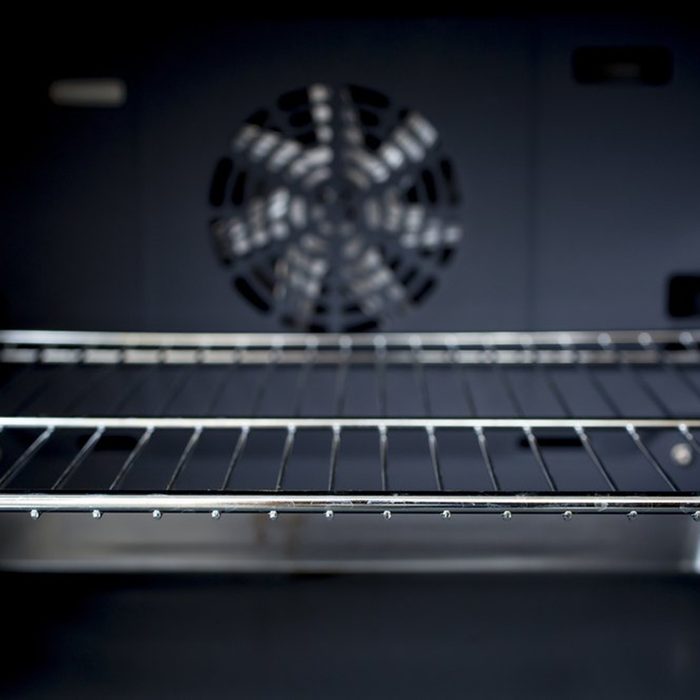
Leave the racks in when self-cleaning
If crazy-high temperatures can get rid of grease and grime in your oven, leaving the racks in for that self-cleaning treatment seems to make sense. But unless the manufacturer specifies that they’re designed for the feature, you’ll want to take them out. Most racks will get discolored during the self-cleaning feature, and the coating that helps them slide out easily might also be ruined. Sorry, but you’ll have to scrub them by hand instead.
Learn about more cooking mistakes that can make your food toxic.
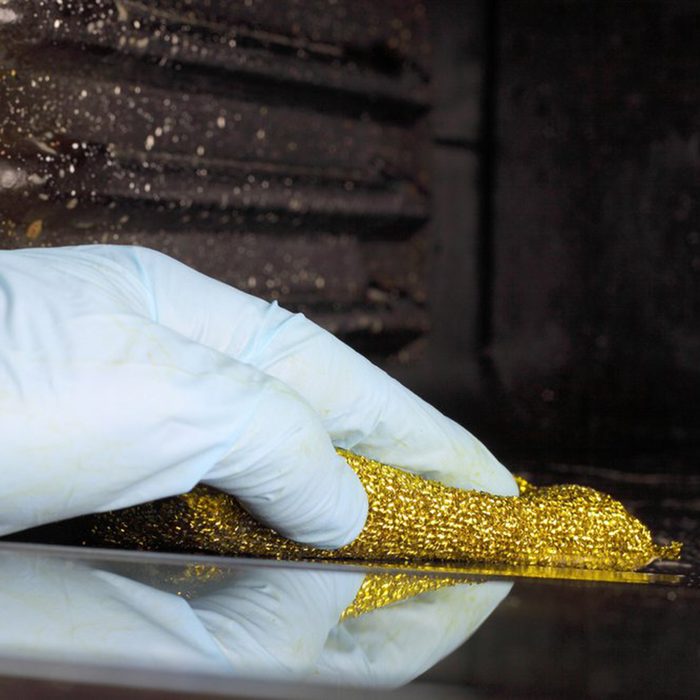
Skip cleaning the nooks and crannies
You don’t even want to think about what’s hiding in the gap between your oven and cabinets. To help keep crumbs and spills from attracting pests, Cohen recommends wrapping a butter knife with a damp washcloth, then rubbing it over the wall inside the crack. Keep the knife angled up to prevent crumbs from falling to the floor, and shake debris out in the sink or trash after each pass. When it seems clean, replace the cloth with a vinegar-dampened one and go over the walls again.
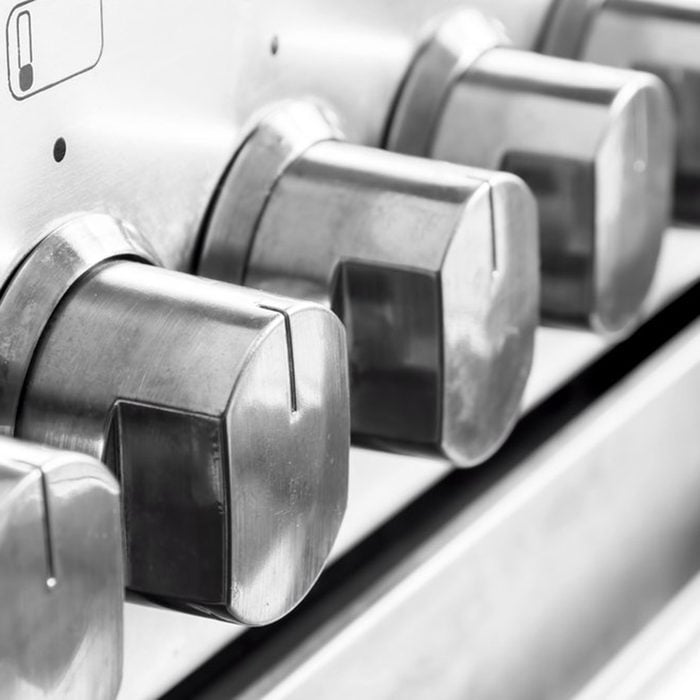
Leave the knobs grubby
When you’ve been touching oven knobs after handling food, you can bet you’ve left some germs behind. To make sure you hit every angle of the knob, pop them off the stove before scrubbing. Cohen suggests letting them soak in a bucket of warm water mixed with 1/4 cup all-purpose cleaner to disinfect.
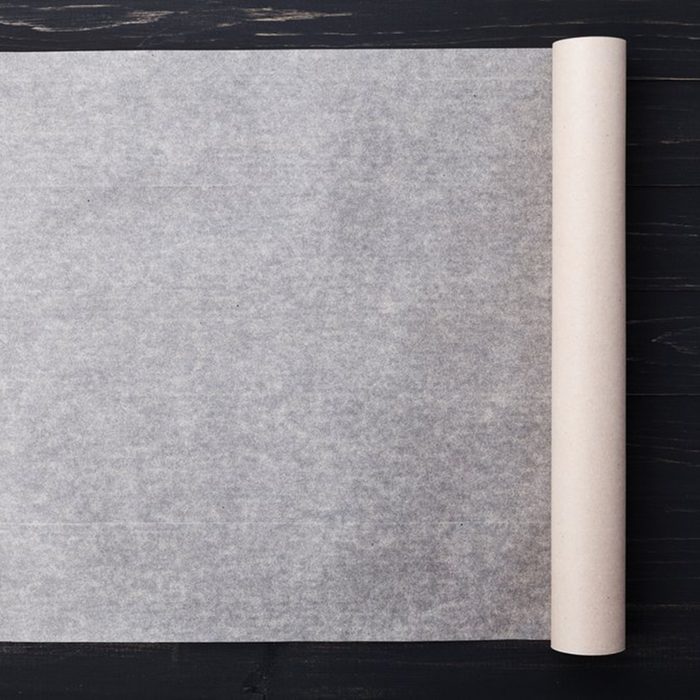
Cook with wax paper
Wax paper and parchment paper might look almost exactly alike, but that wax makes a huge difference. While wax helps wick away moisture, it isn’t so tough against heat. Put it in a hot oven and it will melt—or worse, the paper could catch on fire. Find out about other baking mistakes you didn’t know you were making.
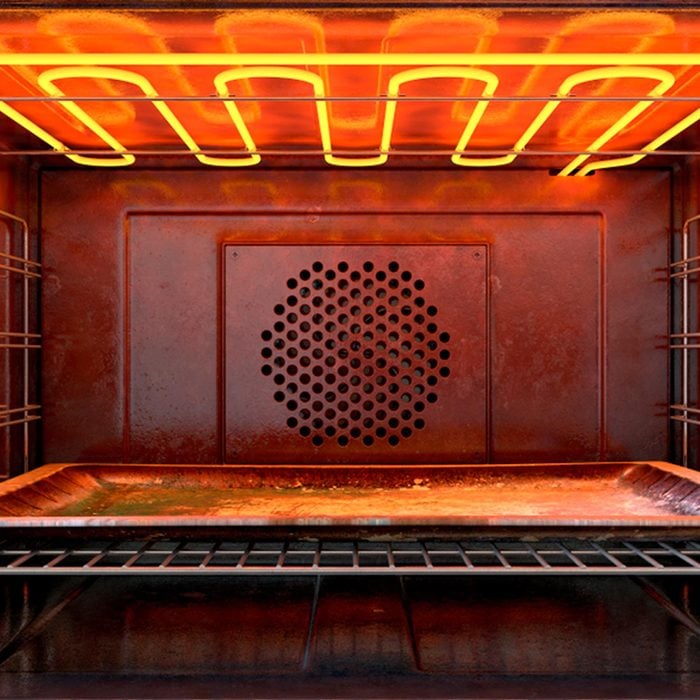
Put items straight on the heating element
Your oven is hot, but not as hot as the heating element itself. While it’s rare that anything in your oven would go up in flames, keeping those high-heat parts clear can prevent any accidents. “I have worked with electric ovens that when an item, such as parchment, touches the heating element, it could catch fire,” says Proto.